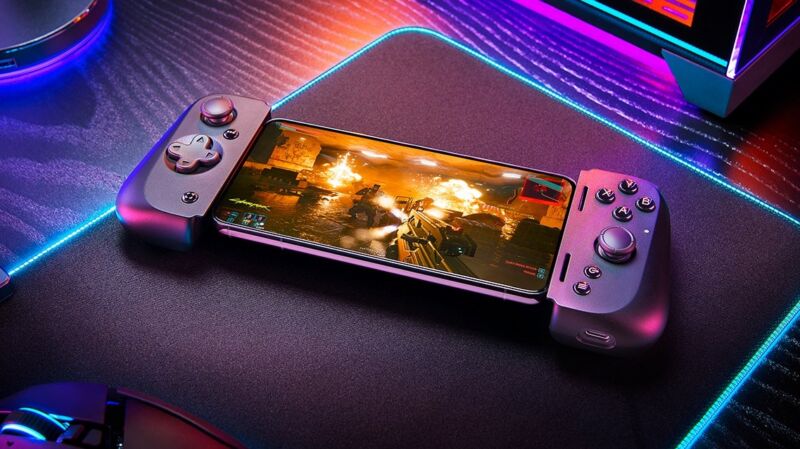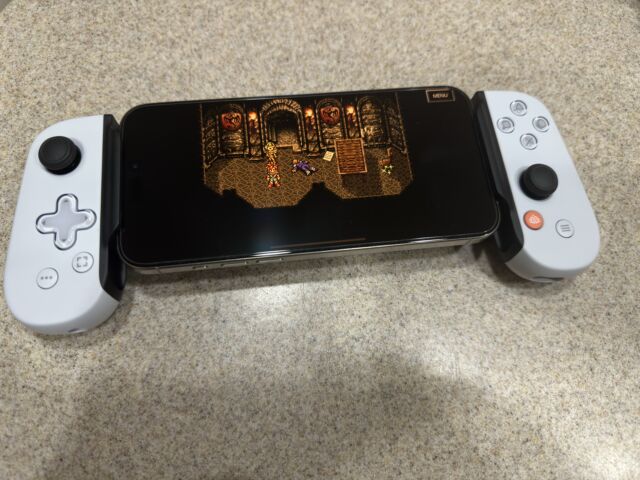Guidemaster: Game controllers to turn your smartphone into a mobile gaming machine

Enlarge / It's not a Razer device unless it's posed next to a bunch of custom RGB lighting, right? In great news, the Razer Kishi V2 includes zero glaring lights, which we prefer here at Ars Technica. (credit: Razer)
With smartphones getting more powerful processors and integrated graphics, gaming on mobile is a firmly established thing at this point. However, while the touchscreen on most smartphones is great for doing phone things, it's not always the best gaming interface (and having your hands obscure the screen can make playing some games particularly difficult). If you find yourself spending serious time gaming on your device, a dedicated gaming controller can make a huge difference, leaving you with something similar in form factor to a Nintendo Switch.
Sure, you could also pack a dedicated handheld gaming device like the Lenovo Legion Go, Valve Steam Deck, or Nintendo Switch-but that's just another piece of gear you'll need to remember to charge and pack into your gear bag each day. Gaming on a mobile phone brings convenience and eliminates the need for a separate, standalone device, and with mobile silicon getting faster every year-especially on the iOS side, where this year's iPhone 15 gets you ray tracing-you're getting rich graphics in a pocket-friendly form factor.
Backbone One mobile gaming controller, Playstation edition (USB-C 2nd gen)
The Backbone One gaming controller. (credit: Simon Nguyen)
Backbone One USB-C 2nd Gen From $100 at Amazon (Ars Technica may earn compensation for sales from links on this post through affiliate programs.)The Backbone One mobile gaming controller is a solid accessory. The buttons are crisp and satisfying to press, and they provide console controller-like responses. While playing a game (in my case, Chrono Trigger for iOS), the D-pad allows for easy maneuvering and doesn't munge inputs together like some cheap controllers do. A removable piece also allows the Backbone One to fit a phone with or without a case, which is a nice addition. (We tried out the USB-C version of the controller for this guide, although it also supports Lightning devices.)